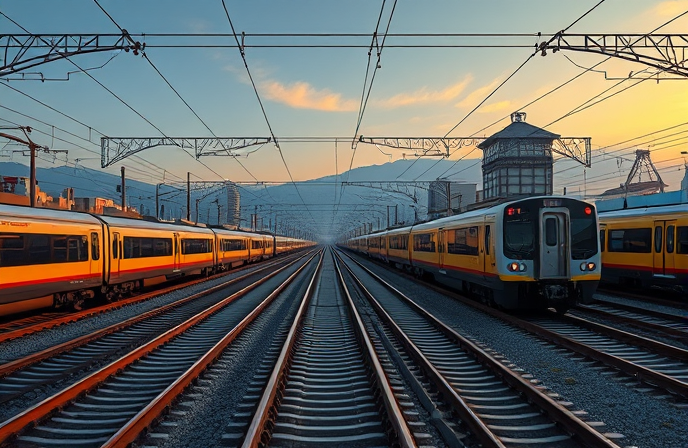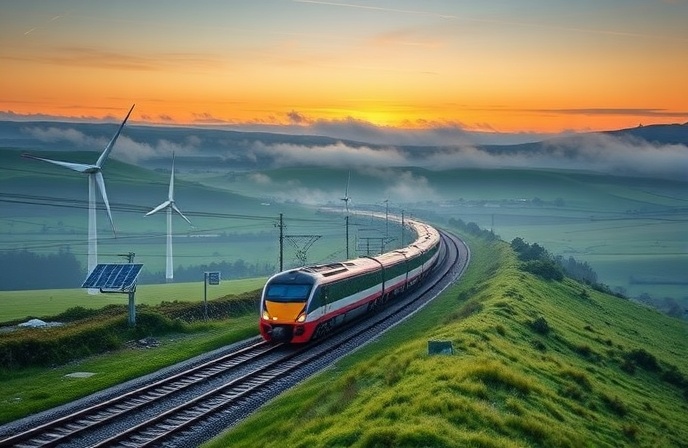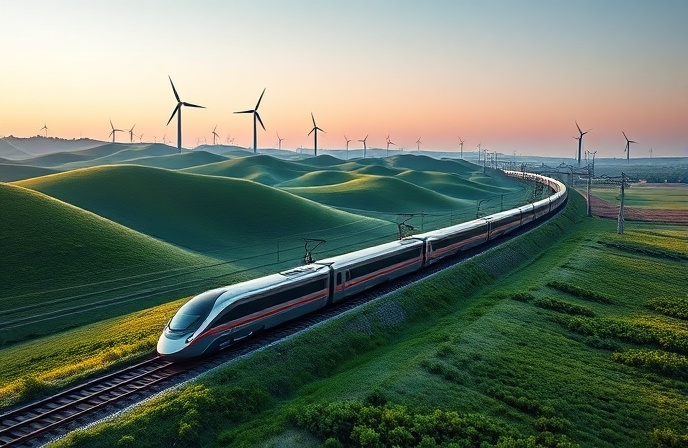Alstom, Santiago Metro: Rail Tech & Leadership Drive Future
Amtrak vet Ray Lang joins Quandel Consultants. Alstom completes Santiago Metro train car. Railway sector sees personnel shifts and infrastructural growth.

Amtrak Veteran Ray Lang Joins Quandel Consultants, Alstom Completes First Santiago Metro Car Body
In a flurry of activity signaling both personnel shifts and infrastructural advancements, the railway industry is witnessing significant developments. Quandel Consultants, a Chicago-based rail and transit firm, announced the appointment of Amtrak veteran Ray Lang as Vice President of Business Development. Simultaneously, Alstom has completed the initial production of a train car body shell for Santiago Metro Line 7 in Chile. These developments highlight the industry’s ongoing evolution, encompassing both strategic leadership changes and the expansion of modern transit infrastructure. This article will examine these developments and explore their implications for the future of the railway sector.
New Leadership at Quandel Consultants
Ray Lang, a seasoned professional with three decades of experience at Amtrak, joins Quandel Consultants as the VP of Business Development. This strategic move aims to bolster the firm’s client relationships and project acquisition efforts. Lang’s tenure at Amtrak, most recently as VP of Amtrak’s State-Supported Service Line from 2020 to 2025, provides him with a comprehensive understanding of the complexities involved in state-supported rail operations. His responsibilities included negotiating annual agreements across 29 routes in 18 states with 21 partners. This experience is expected to be invaluable in guiding Quandel Consultants’ business development initiatives and tracking future railway projects.
Alstom’s Metropolis Trainsets for Santiago Metro Line 7
Alstom has completed the production of the first car body shell for the new Santiago Metro Line 7, a key element in the ongoing expansion of the Chilean capital’s public transport system. This milestone marks the beginning of the production of 37 Metropolis trainsets, each comprising five cars. The trains are being manufactured at Alstom’s facility in Taubate, Brazil. The contract between Alstom and Metro de Santiago encompasses not only the supply of the trainsets but also the Urbalis CBTC (Communication-Based Train Control) signaling system, a 20-year maintenance agreement, and a predictive maintenance system for the trains, tracks, and catenary system. This comprehensive approach aims to optimize the longevity and efficiency of the new Line 7.
Technical Specifications and Longevity
Alstom’s Metropolis trains are renowned for their durability and advanced features. Constructed primarily of stainless steel, these trains are designed to have a service life exceeding 40 years, ensuring a long-term investment for the Santiago Metro. The integration of the Urbalis CBTC system provides advanced signaling and train control capabilities, which will help in maximizing line capacity and improving service reliability. Additionally, the predictive maintenance system will proactively identify and address potential issues, further minimizing downtime and reducing operational costs.
Conclusion
The railway industry is undergoing a period of dynamic change, characterized by the influx of experienced professionals and the deployment of cutting-edge technologies. Ray Lang’s appointment at Quandel Consultants signifies a strategic investment in relationship-building and project acquisition, vital for navigating the complex landscape of modern railway projects. Simultaneously, the progress in Santiago Metro’s Line 7, highlighted by Alstom’s initial car body production, underscores a growing commitment to improving urban transit. These developments suggest a trend of increased investment in both human capital and advanced infrastructure. The integration of technologies like CBTC and predictive maintenance also points to an industry striving for operational excellence and enhanced passenger experience. The future outlook of the rail industry is promising, with new projects and emerging technologies paving the way for greater efficiency, sustainability, and accessibility in global transportation systems. These investments in personnel and technology promise not only improved services but also create opportunities for further innovation and collaboration within the rail sector.





